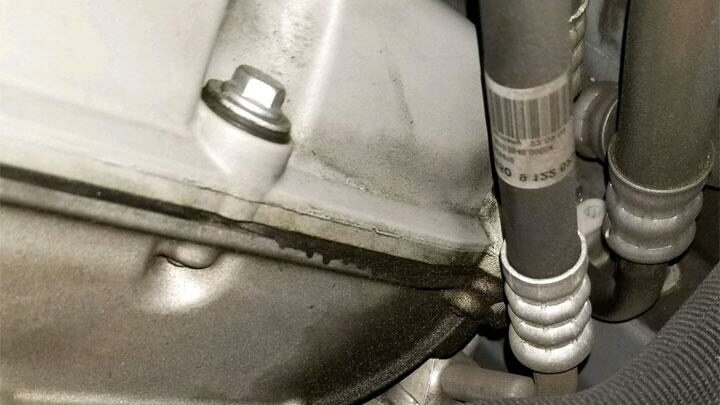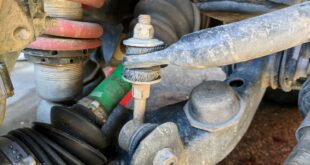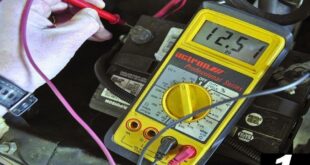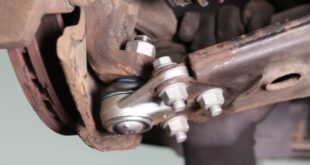Is it on the engine? Valve cover gasket defective / leaking? We have some information about the symptoms, the repair and also the costs. But first a few general details. The cylinder head cover/valve cover is the uppermost part of the combustion engine. It closes the cylinder head. A functionally relevant task valve cover gasket is to keep combustion gases and lubricants from escaping into the environment when the engine is running. The valve cover is therefore sealed with a valve cover gasket. It is normally made of plastic or rubber. However, it can be affected by age wear become leaky (brittle, hard, porous). Then engine oil leaks out!
Identify wear and tear in good time
A defective valve cover gasket is indicated by the above oil leak noticeable in the area of the cylinder head. This is particularly visible in the area around the spark plugs, which then show a certain "oil moisture" in the upper part. It becomes even more obvious with one dripping, which can also be perceived under the vehicle after some time. If the leakage has reached a certain extent, this is indicated by increased oil consumption and visual warnings Oil pressure warning light (if there is a large oil loss) noticeable. However, there can also be other causes for the loss of oil, such as a defective one variable camshaft adjustment or a broken one camshaft oil seal to be responsible. Loss of oil undisputedly represents a significant deficiency in the functionality of the vehicle. However, as long as this is only indicated by a subtle "Oil sweating' and not by a Drain expresses this is no reason for not passing the main inspection.
Troubleshooting / replacing the defective seal
In short, the valve cover gasket is failing its job exchange the only solution. One Repair respectively a patches can not. The procedure is as follows. If available: decrease the Engine cover, after which the ignition coils and ignition cables are dismantled for better access to the valve cover. Depending on the model, the amount of work can be increased by dismantling the Intake, up to an expansion of injectors (can occur occasionally) broaden. Although the latter step is the exception, it increases the effort many times over. The defective seal is now located between the cylinder head and the valve cover, which can be removed from its position and disposed of.
Depending on the age and stress on the seal, after it has been detached, the removal of residues necessary. This in turn can take an increased amount of time, but is essential for subsequent proper functioning. Once this has happened, after attaching the new seal, the valve cover can be put back on and using the instructions given by the manufacturer tightening values are screwed to the cylinder head. If you allow yourself to be tempted not to replace the seal and instead try to eliminate the problem by "retightening" the cover screws, you will notice a return of oil loss after a short time. The already missing properties of the old gasket will not return after tightening again. Small spacers are often built into the seal to prevent crushing when tightening.
Time and material costs for the repair!
Of course, the fact is that the costs vary significantly workload, affected by disassembling components, restoring the sealing surface, etc. In addition to the material costs, which are between €10 and €80 per seal amount, the mentioned working time is a big factor. Usually will approx. 1-2 hours per cylinder bank scheduled. The resulting labor costs amount to approx. €50 to €300, based on an hourly rate of 100 euros. After the seal change, that should also Engine oil including filter it will be exchanged. Any consequential costs caused by contamination in the system are counteracted here.
The following note is essential: For safety reasons, tuningblog recommends all repair, inspection and maintenance work exclusively to be carried out in a specialist workshop! Although our information is summarized to the best of our knowledge and belief, we cannot assume any liability for the content. All information is therefore "without guarantee".
Of course, that wasn't the end of it!
In this tuningblog category there are guides and instructions for common defects/repairs on the vehicle and for installing accessories/tuning parts. Our articles explain in a simple way common defects and the corresponding repairs, as well as explaining how the first signs of a defect become noticeable. In most cases, we also have initial clues to the repair instructions in our repair instructions approximate The costs of the pending repair are listed. The goal of our subcategory “Auto Repair Guide“ is to create a head start in knowledge for the next visit to the workshop with initial tips. This may save you from tedious troubleshooting and small things can perhaps be done directly on your own. The same applies, of course, to the installation of accessories/tuning parts. Here, too, we would like to help with the implementation with instructions and tips. There are many other posts on this as well. Below is an excerpt of the last and HERE there are all previous instructions:
|
Stabilizer bearing worn out? It is now important to note this! |
"tuningblog.eu" - we keep you up to date on the subject of autotuning and car styling with our tuning magazine and present you with the latest tuned vehicles from all over the world every day. It's best to subscribe to ours Feed and will automatically be informed as soon as there is something new about this post, and of course also to all other contributions.
 tuningblog.eu Your magazine about tuning the car
tuningblog.eu Your magazine about tuning the car




